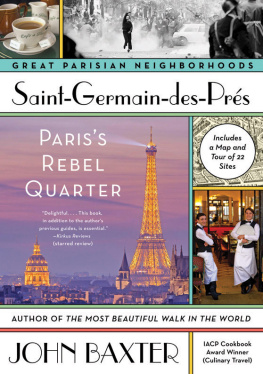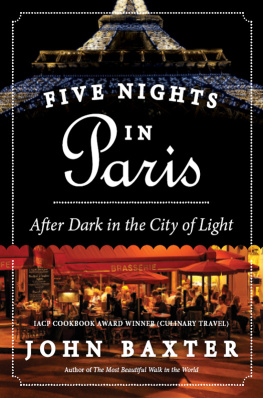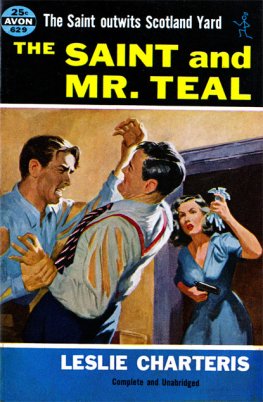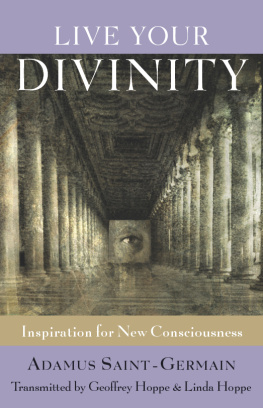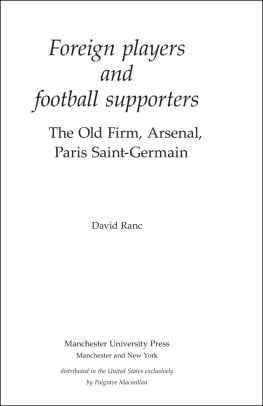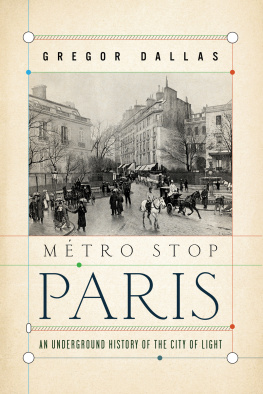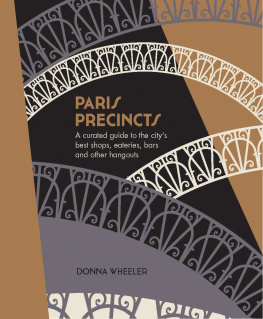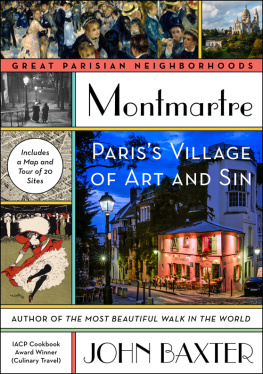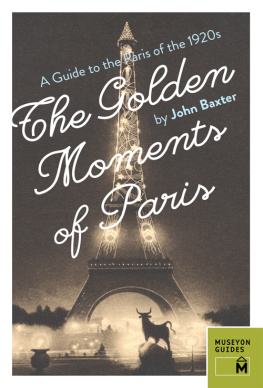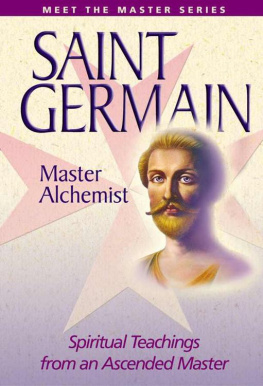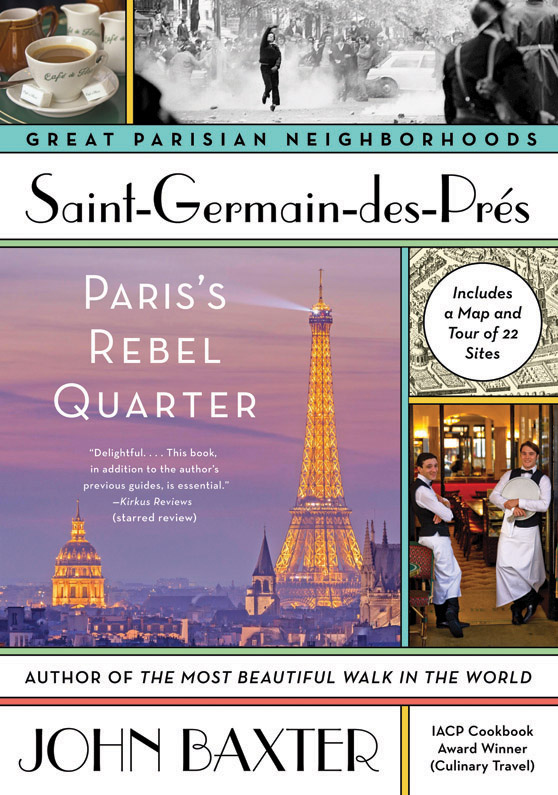Pour Marie-Dominique and Louise
et la vie en rose.
Cities are bibles of stone. This city possesses no single dome, roof or pavement which does not convey some message of alliance or of union, and which does not offer some lesson, example or advice. Let the people of all the world come to this prodigious alphabet of monuments, of tombs and of trophies to learn peace and unlearn the meaning of hatred. Let them be confident. For Paris has proven itself. To have once been Lutece and to have become Pariswhat could be a more magnificent symbol? To have been mud and to have become spirit!
VICTOR HUGO
CONTENTS
Guide
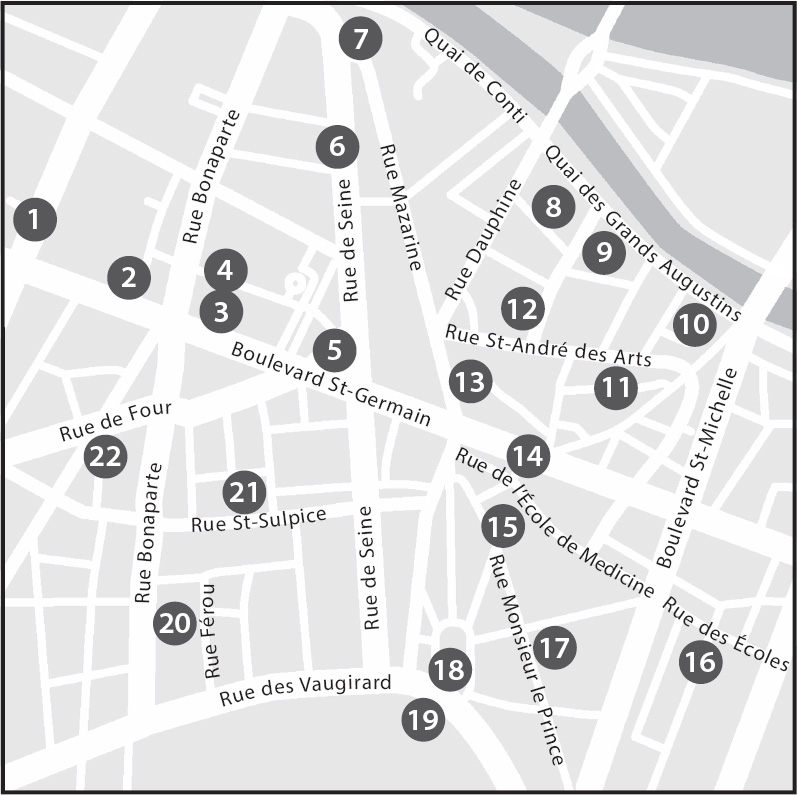
Saint-Germain-Des-Prs

Debauve et Gallais, Chocolatiers
Caf de Flore
Church of St. Germain-des-Prs
Apollinaire Monument
Cheese sellers
Duncan Akademia
Tour de Nesle. Institut de France
Mariage Frres
Laprouse
Latin Quarter
Beat Hotel
Le Tabou
Marats Printery
Metro Odon
San Francisco Book Company
Sorbonne
Restaurant Polidor
Odon Theatre
Fountain Leda
Hemingway residence
Miss Bettys Brothel
Htel Lutetia
Where a man feels at home, outside of where hes born, is where hes meant to go.
ERNEST HEMINGWAY, GREEN HILLS OF AFRICA
I GREW UP IN CITIES. I NEVER EXPECTED TO SETTLE DOWN in a village.
That said, this village isnt like many others.
Villages today are often marketing gimmicks: a few shops done up in antique style, and actors in costume urging you to step in and buy something you dont want.
Our village of Saint-Germain is real. It began as all true villages do, when men and women closed ranks against the unknown. After agreeing on the limits of their community, they built some kind of wall, appointed a few neighbors to represent them, others to stand guard.
Natural borders define the true villageusually a river on one side, the highway passing by on the other, with, to the east, the fields they cultivate by day and, to the west, the church to which they look for solace, for learning, for help in sickness and war.
Saint-Germain has all of those. Even today, when its embedded in a city, we cling to that pride, that sense of belongingand, admittedly, to the old suspicions. Standing on our frontier, we look across the street at our neighbors and think, Oh, them.
It cant be a coincidence that a man from Saint-Germain, Guy Debord, first proposed the theory of psychogeography: a sense of place so fundamental that it infuses emotion as powerfully as a drug.
Scots swear that, as their car crosses the border with England, they experience a bump. Actor Robert De Niro, born in New Yorks Greenwich Village, just doesnt feel comfortable above Fourteenth Street. The residents of some South London districts are so recognizable by style and accent that they have a uniform: velvet suits covered in pearl buttons, Pearly Kings and Queens.
And dont try telling a Virginian that the Mason-Dixon Line is just a geographical convention or you may have an argument on your hands.
Our village has no wallsnot physical ones anywaynor is the accent particularly distinctive. Nobody wears a uniform. Unless you count political demonstrations, we do not parade. There are no souvenir shops selling scented candles or snow domes; look in vain for I [heart] Saint-Germain T-shirts. We do not advertise. We just tell visitors Look for yourselves, and for those who do, our secrets reveal themselves.
They soon notice, for instance, that, even though its barely half the size of New Yorks Central Park and no bigger than Hyde Park in London, Saint-Germain has sheltered some of civilizations greatest personalities.
Ours is the village of those archetypal great lovers Hlose and Abelard; of Pablo Picasso and Arthur Rimbaud; of F. Scott Fitzgerald and Ernest Hemingway; of Inspector Maigret and Napoleon Bonaparte; the Rights of Man and The Sun Also Rises and La Vie en Rose and La Bohme; of Gertrude Stein, Simone de Beauvoir, and Jean-Paul Sartre; Juliette Grco, caf society, the new wave of cinema; of existentialismand, forgetting for a moment mind and soul, long afternoons in crumpled sheets, lunches that last till sunset, baguettes with cheese, a caf crme or a glass of Bordeaux shared with someone close on a bateau mouche as it glides under Pont Neuf, pivots in the eddy at the foot of the le Saint-Louis, and heads back downstream under the disapproving eye of Notre Dame.
Our streets have seen history made and unmade. In 1789, they ran with blood as our village joined with others to put down a corrupt society. In May 1968, the youth of Paris poured out of the universities and, meeting in our local theatre, remade Europe in a few weeks, really just for the hell of it. It was, remarked a surprised historian, the only known revolution in which nobody died.
But revolution here comes in all sizes. Just down our street, in a little bookshop, a small but determined woman from Princeton, New Jersey, took upon herself the burden of publishing James Joyces Ulysses, the novel that transfigured literature.
You might think that every original thought would long since have been wrung from these stones, these lanes and courtyards, and that ones mind would run off over the sea of metal roofs of Paris into wider fields and skies.
But one does not tire here. There is always more to experience because each day more is made.
Nothing in our village ever dies. It is a living museum of what we can create, both at our finest moments and our worst.
We call our village Saint-Germainnot pronounced Jermayne, by the way, but like Jerman and emphasizing the second syllable: Jer-MAN. Were a little touchy about that. Otherwise, with occasional exceptions, were hospitable and welcome visitors.
You should come. You might even stay a while. I did.
The first half-hour in Paris is sometimes more painful than pleasant. Even veteran travelers suffer from the feeling that everyone is shouting at them because they are slow and stupid. They are torn between the fear of seeming ignorant, or being humiliated should they dispense the wrong-sized tip. But once the headlong plunge is taken, there comes the first mounting excitement.
KAYE WEBB, RONALD SEARLES PARIS SKETCHBOOK
I first came to Paris in 1969. Signs of the previous Mays troubles were everywherethe stumps of felled trees along the boulevards; streets where cobbles had been torn up to fling at the police and militiabut the disturbances were already being minimized, downgraded from a revolution to mere vnements (events).
Ernest Hemingway, Henry Miller, James Joyce, and the rest of the Lost Generation had long since moved on, but the Beat Generation had taken their place, with Jack Kerouac, William Burroughs, and Allen Ginsberg living and socializing in, if not the same hotels and cafs they had patronized, then places very like them.
For anyone ambitious to be an artist or writer, Paris remained the place one came to discover oneself. Most came the cheapest way. In 1969, that generally meant a shiptramp steamers, refurbished prewar liners on their last crossings before the scrap yard, even repatriated wartime Liberty ships perilously ferrying munitions back from Europe.

